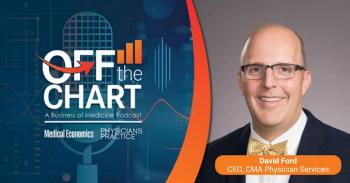
Discussing prescription prices with patients
A one-minute conversation can have an enormous impact.
With more skin in the game than ever before, patients are becoming savvy, engaged, and discerning consumers. They know that the name-brand drug with the $300 monthly price tag may not be the only option. They want a healthcare provider who has the information needed to compare and guide them to alternatives that achieve the same or similar outcome.
In the past, outside of formulary status, prescribers had little to no information about what a medication would cost their patient at the pharmacy. This was the root cause of a problem with costly and clinically impactful pain points.
For patients, this typically results in finding out the out-of-pocket cost for their medication at the pharmacy. When the cost is too high, patients often abandon treatment altogether, which can make existing problems worse or give rise to new ones.
Alternatively, the pharmacist may attempt to find a more affordable medication, which creates real and immediate friction for all: the prescriber, the pharmacist, and the patient. Everyone involved is diverted to secondary workflows, including multiple phone calls and faxes to identify and prescribe an alternative, more affordable choice. Switching medications can take days and is only effective if the patient waits out the process and picks up their medication once it’s available.
In fact, a
This breakdown in the prescribing process and the manual interventions that result cost time and money while undermining care quality; patient and provider satisfaction; and, most importantly, medication adherence.
There is also ongoing pressure from patients and government to increase price transparency in healthcare, and this isn’t an issue that’s going away. Last year, the Centers for Medicare and Medicaid Services (CMS) issued a
Putting Cost-and Alternative Therapies-Front and Center
Today, prescription price transparency solutions within electronic health records (EHRs) are an important tool to help patients get necessary medications at an affordable cost, and the
Prescription price transparency tools provide prescribers with the patient’s actual out-of-pocket cost based on a patient’s plan, deductible, co-pay, and other factors all within 1-2 seconds during the prescribing process. That cost is calculated using the same methods and patient information as when the patient arrives at the pharmacy.
While the cost of the prescription is helpful, the real value is derived when a list of therapeutic alternatives is provided that can allow the patient to achieve the same outcome at a lower cost or without requiring the time-consuming process of prior authorization. The alternatives may be a different quantity (i.e. 90 days vs 30 days), a different delivery mechanism (i.e. mail-order vs retail), or a different medication in a similar drug class. Those therapeutic options should be vetted with evidence-based evaluations and have full transparency in terms of how those alternatives were selected and presented. The alternatives can be quickly selected during the patient encounter by the prescriber during electronic prescribing workflow of the EHR.
A One Minute Conversation Can Have Enormous Impact
With this information quickly and conveniently in hand, prescribers are well prepared to start a conversation with patients about real-time costs and real-time solutions.
A recent
There are a few immediate steps providers can take to incorporate price transparency conversation at the point of care, such as:
- Ask patients if cost is a concern, rather than guessing or waiting for patients to bring up cost concerns
- Office staff can also start the conversation. For example, a medical assistant can ask a screening question about medication affordability during the intake process.
- Just keep trying.
Studies show that the more conversations healthcare professionals have, the easier it gets.
Today, most EHR vendors have signed on to include patient-specific, benefits-based prescription price information within their e-prescribing workflow. With prescription price transparency tools at the point of prescribing, doctors can see the out-of-pocket cost to the patient and lower cost alternatives as soon as they select the drug, dose, quantity, pharmacy, and days’ supply, and can quickly make the change if there is a better choice.
Talk is not cheap in healthcare; however, what’s usually a less than
Newsletter
Optimize your practice with the Physicians Practice newsletter, offering management pearls, leadership tips, and business strategies tailored for practice administrators and physicians of any specialty.














